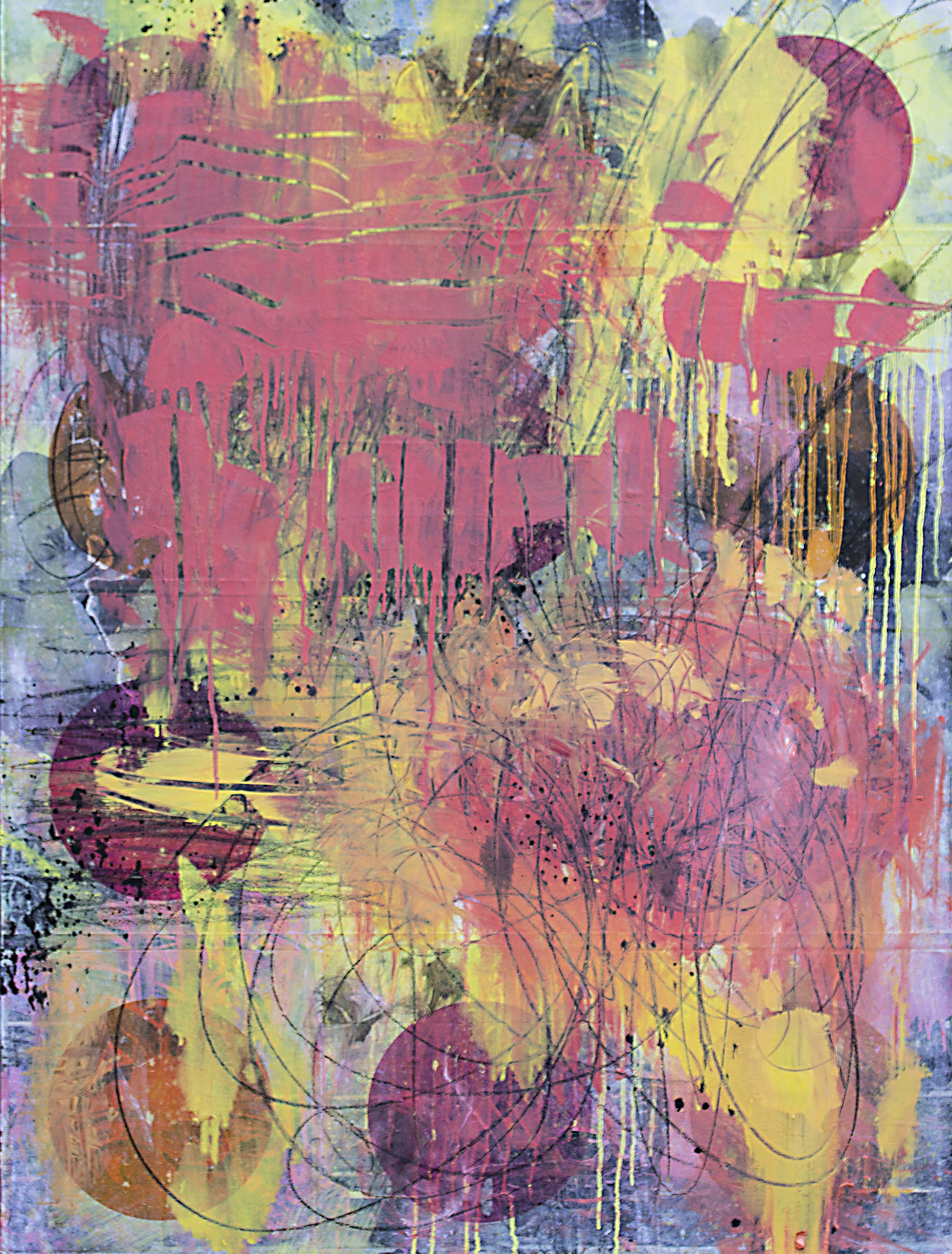“Haubrich’s expressive abstracts have a vitality created by vivid color and unexpected combinations of drips, lines and shapes.”
“When I was three, I picked up a pencil and began to draw. My parents, who found this interesting, provided me with a table in the family kitchen on which to work. I would draw for hours at that table.
Growing up in rural Minnesota, I had a physical and emotional connection with the large skies and expansive landscape of the region. Along with this response to the natural world, I had an affinity with the abandoned farms, rusted cars and farm equipment, and the sense of the past that permeated this world.
The large landscapes I physically inhabited when I was young and the expansiveness of my vision brought me to painting. Through gesture, color, and form I can articulate my visual experiences and emotional responses to my life in a physical world. Abstraction allows me the opportunity to create landscapes that are a physical, rational response to external and internal experiences.” — JH
John Haubrich was born and raised in Minnesota. He got an Associate of Arts degree from Normandale College in Bloomington, Minnesota and went on to a forty-year career as a graphic designer and art director for corporate and educational institutions. He is currently pursuing a degree in visual arts at Fordham University at Lincoln Center, where he serves as an in-house art director.
Haubrich’s work has been exhibited at Ille Arts and Neoteric Fine Art, in Amagansett, NY; Guild Hall, folioeast, and Longhouse Preserve, in East Hampton, NY; the Southampton Cultural Center, and Chrysalis Gallery, in Southampton, NY; Boltax Gallery, Shelter Island, NY; Silas Marder Gallery, Bridgehampton, NY; A.I.R. Gallery, Lexington Avenue Armory, and Stricoff Fine Art, New York, NY; Los Angeles Center for Digital Art, Los Angeles, CA; and Axis Gallery, Sacramento, CA, among other galleries.
He maintains studios in East Hampton, NY and New York City.
Haubrich in his studio by Jaime Lopez
ARTIST’S CAROUSEL
rotating exhibit of current & recently sold work




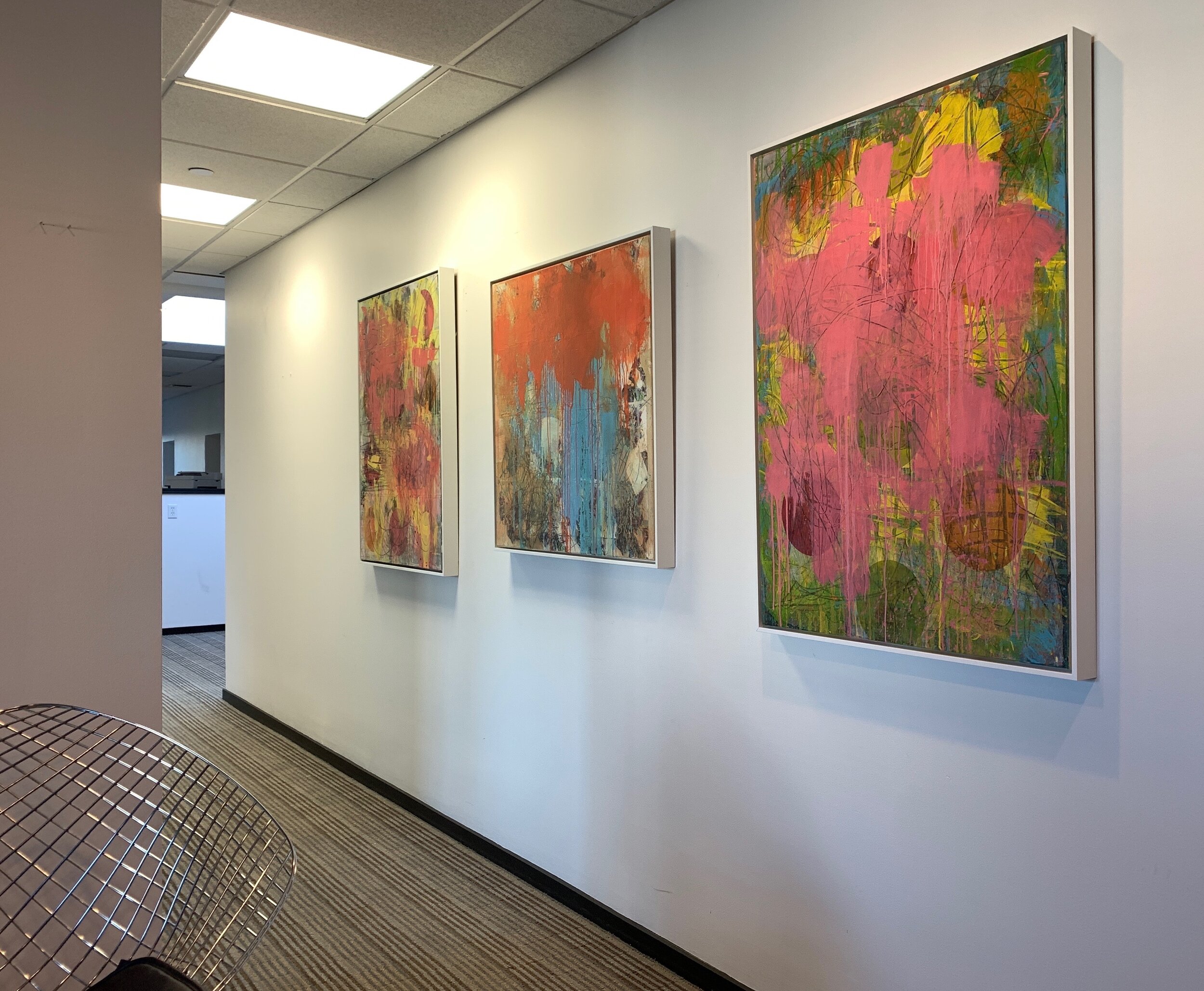


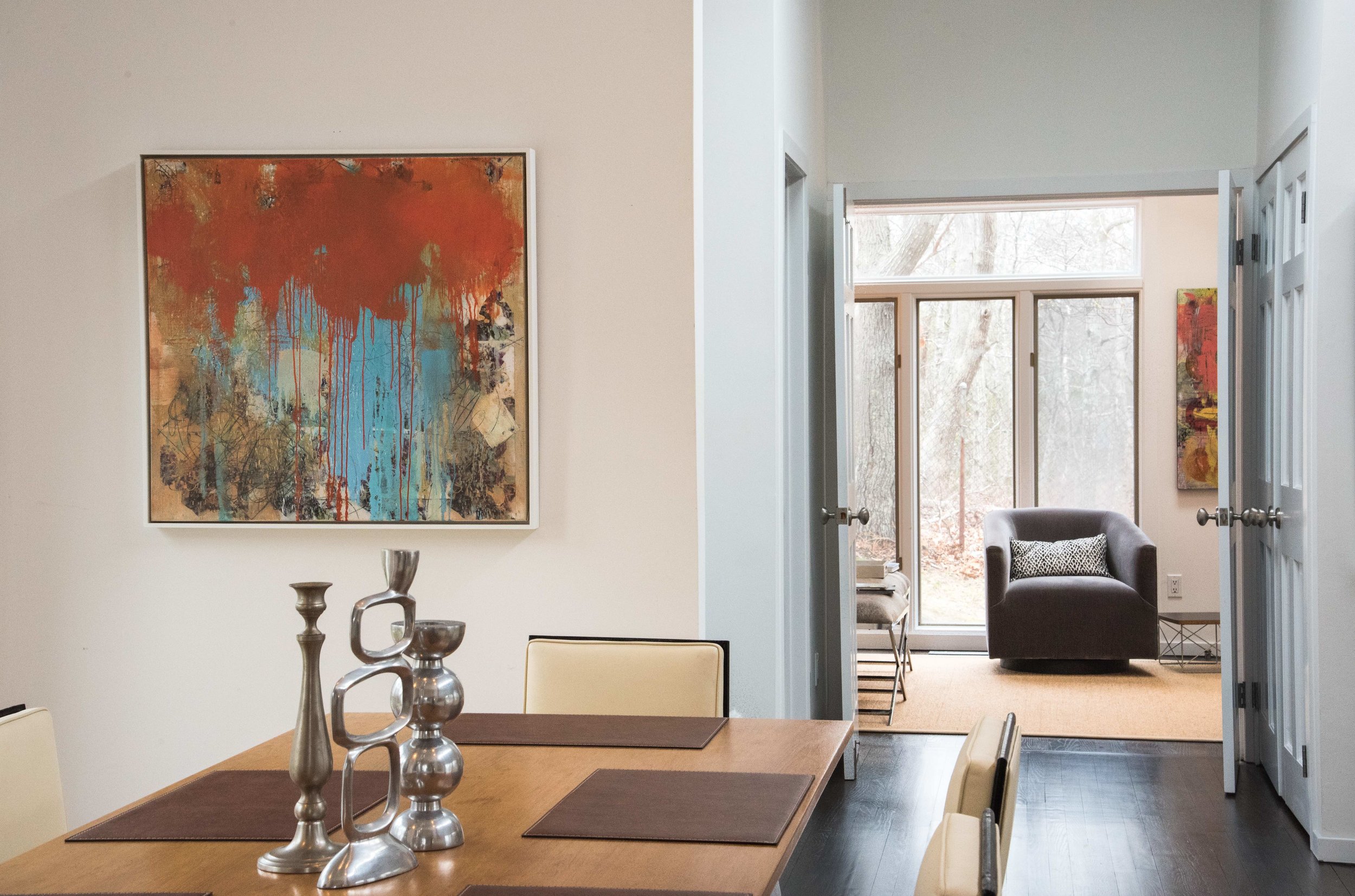





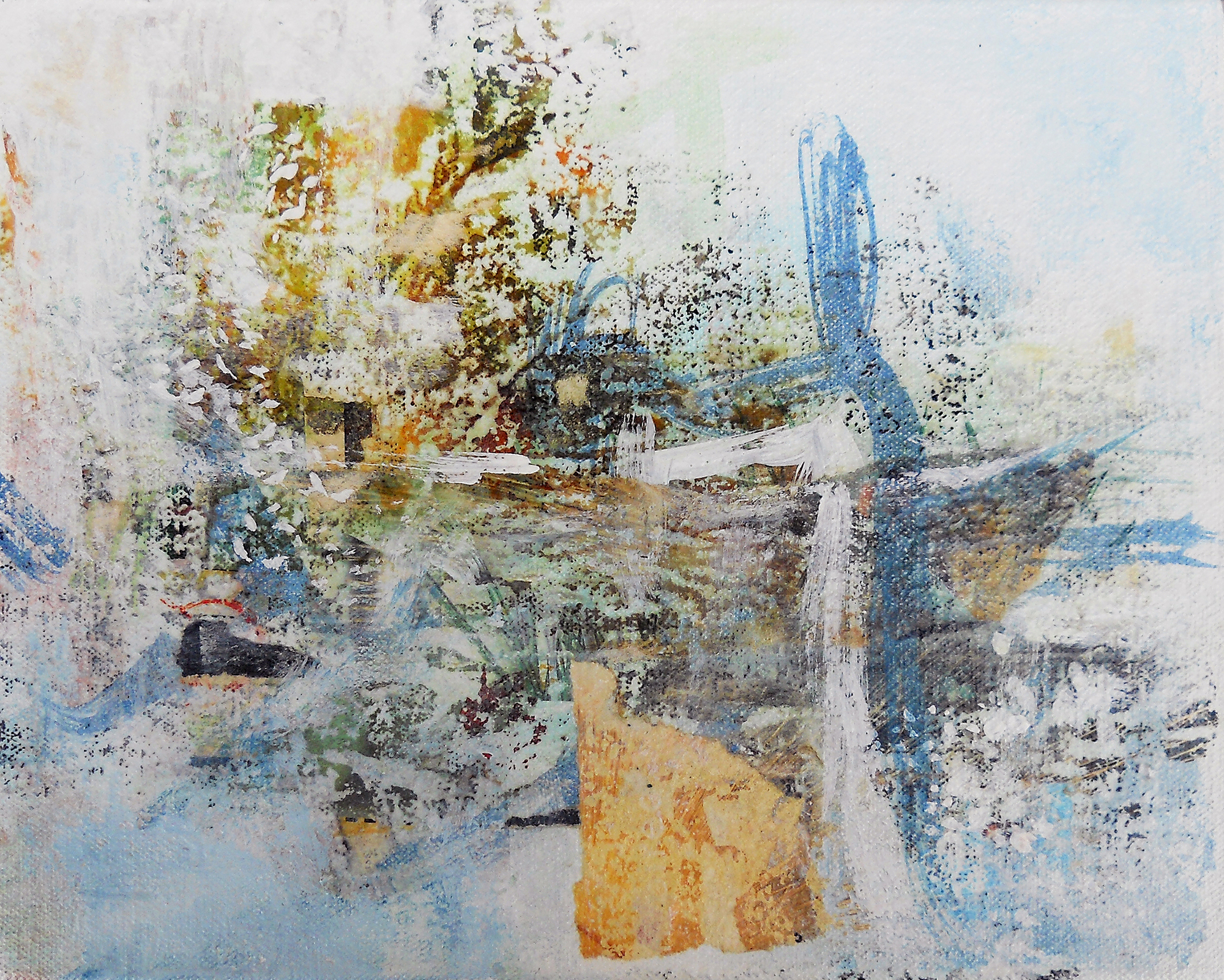




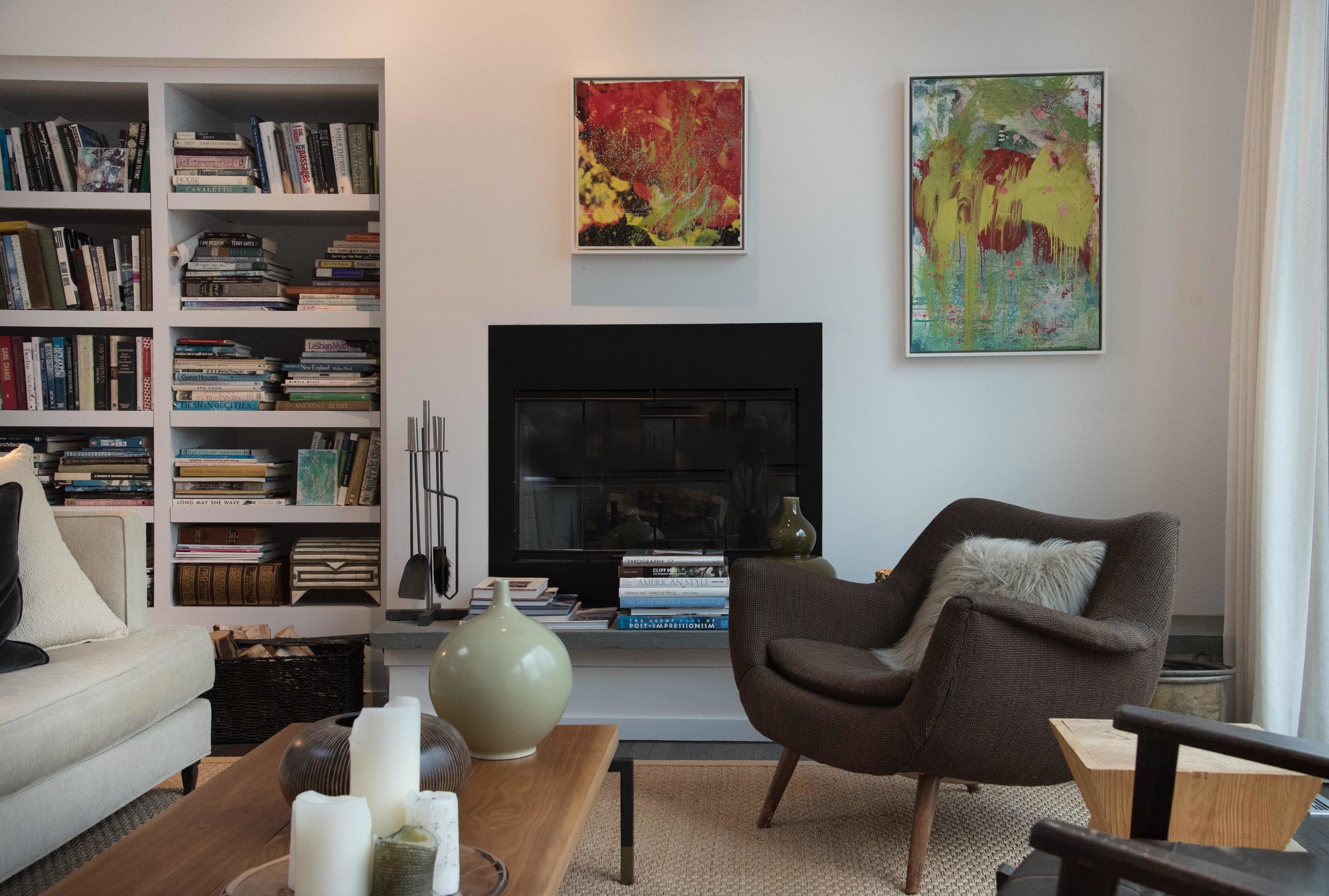



JOHN HAUBRICH speaks to folioeast’s COCO MYERS
CM/ YOUR PAINTINGS ARE MULTI-LAYERED. CAN YOU DESCRIBE THE PROCESS?
JH/ Using my own photography, I print out the images, then with gesso and polymer emulsion, I transfer the printed images onto the canvas. After this, I begin to layer the work with oil paint, more image transfer, pencil, crayon, and oil stick, until there is material depth on a two dimensional surface.
CM/ WHAT BROUGHT YOU TO THE EAST END? AND HOW DOES IT INFLUENCE YOUR WORK?
JH/ I had visited prior to buying my first home, and I loved being near the sea. Also the landscape reminded me of my midwestern upbringing. I am inspired by the light, the color, and the abundance of plant life. I live on Hogs Creek so I have a beautiful view of the creek and the bird life that occupies the area.
CM/ DO FEEL A CONNECTION TO THE HISTORY OF THE ABSTRACT EXPRESSIONIST MOVEMENT ON THE EAST END?
JH/ I am particularly inspired by Willem de Kooning for his use of color and abstraction.
CM/ DO YOU HAVE ANY WORKS BY EAST END ARTISTS IN YOUR HOME?
JH/ I currently own two pieces by James Kennedy.







